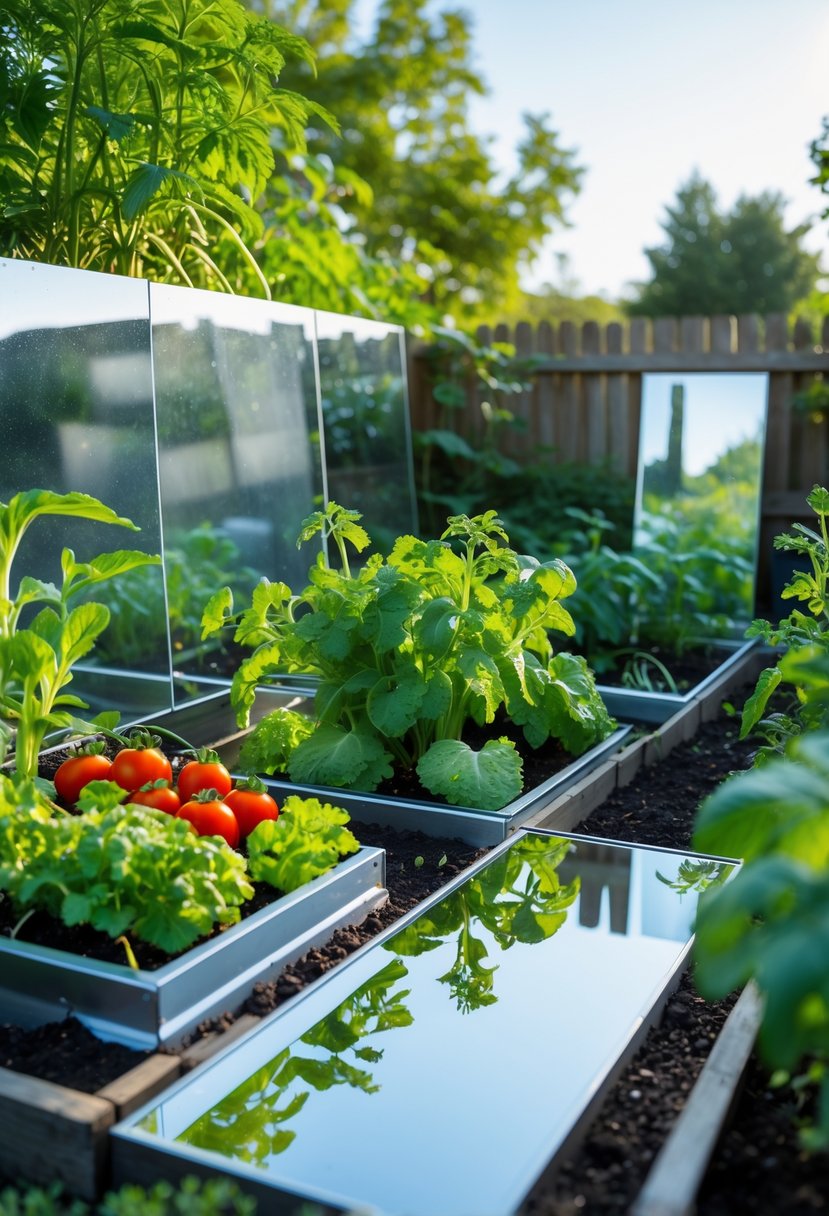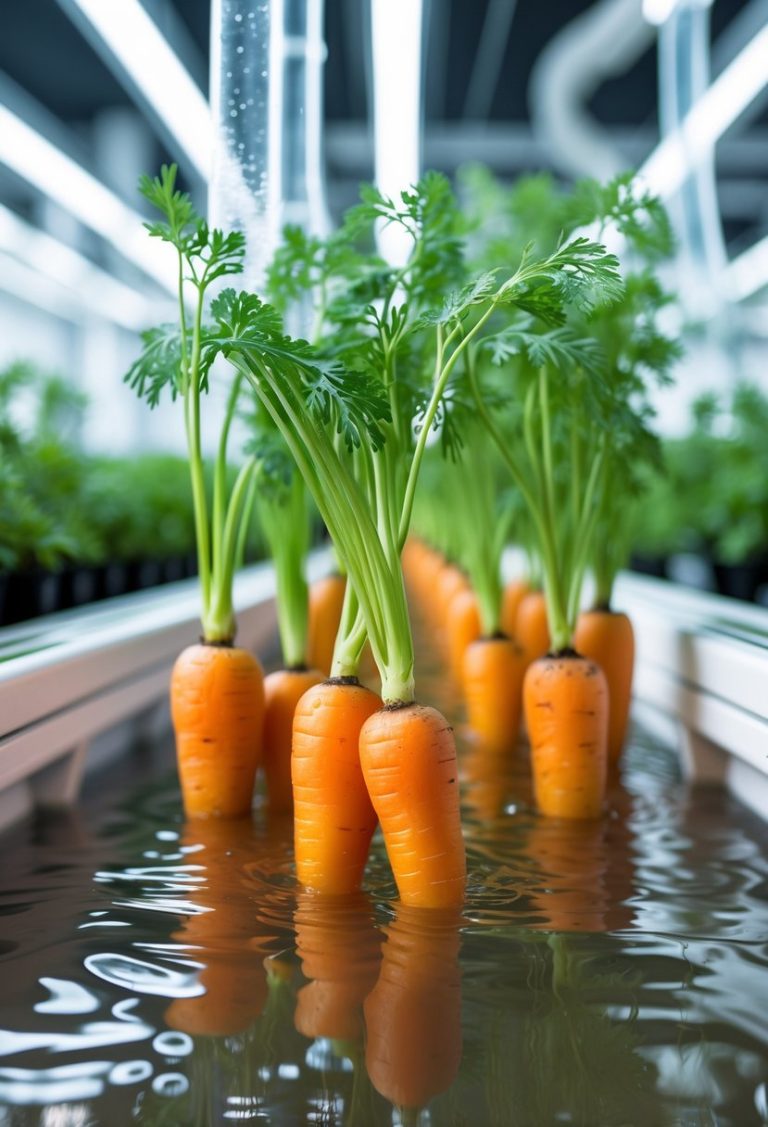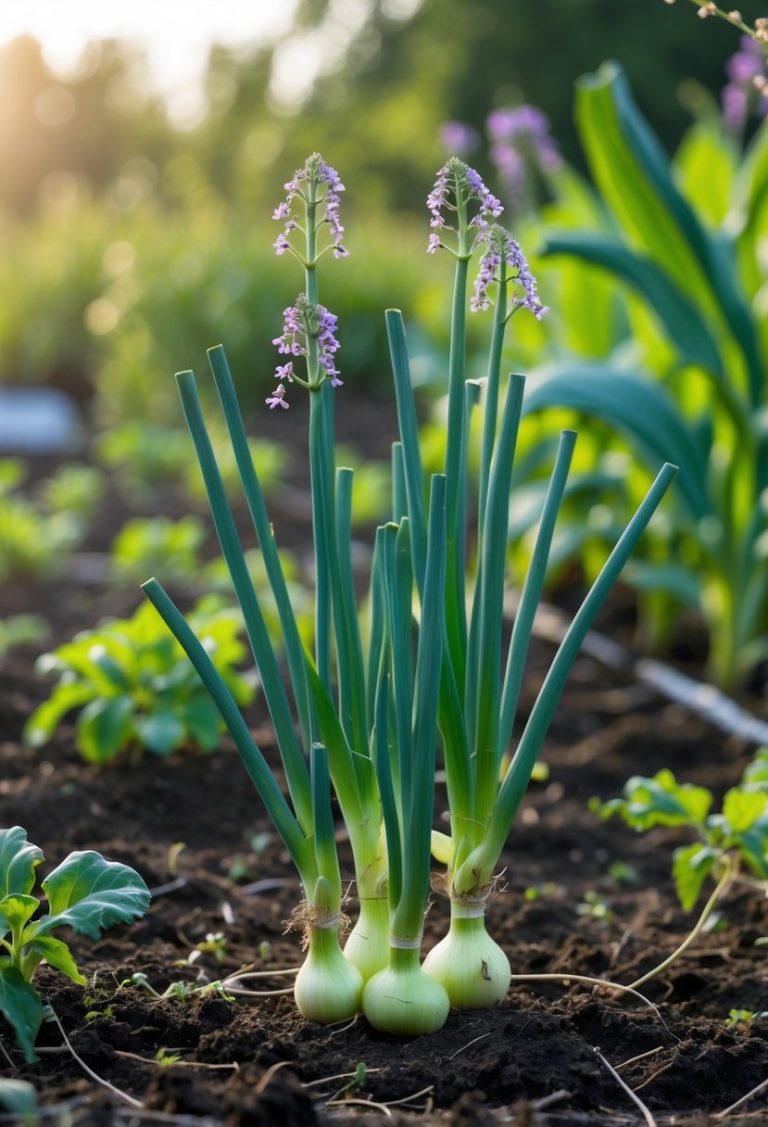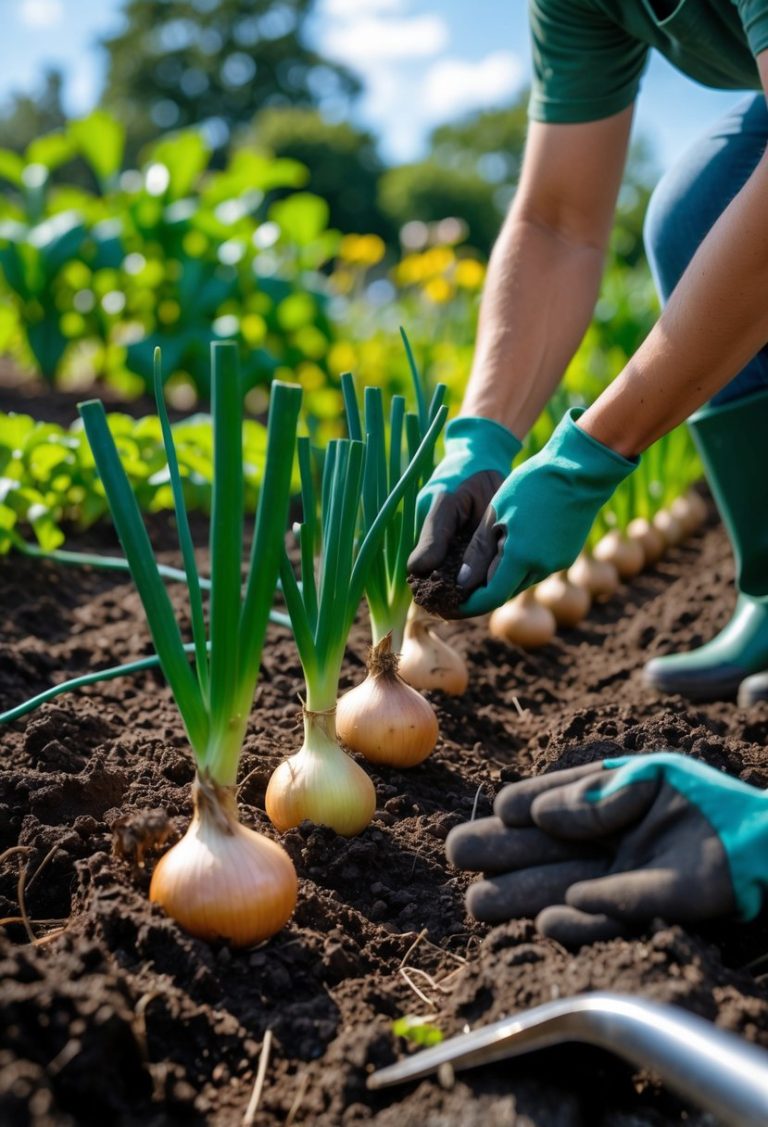20 Creative Small Vegetable Garden Design Ideas for Maximizing Space and Yield
If you have limited space but want to grow your own vegetables, a small garden can still be very productive and enjoyable. Designing your garden with smart ideas allows you to make the most of the area you have while keeping it attractive and easy to care for.

You can create a functional and beautiful vegetable garden even in a small space by using creative design ideas. These ideas help you maximize your growing area, organize plants efficiently, and enjoy fresh produce right at home.
1) Vertical pallet garden for herbs and greens

You can use an old wooden pallet to create a vertical garden for herbs and greens. Stand the pallet upright and fill the spaces between the slats with soil.
This setup helps save space and keeps plants easy to reach. Herbs like basil, mint, and cilantro grow well in this type of garden.
It also works well for small leafy vegetables. You only need a sunny spot and regular watering to keep your plants healthy.
2) Raised beds with drip irrigation

You can build raised beds to grow vegetables in small spaces while keeping plants healthy. Adding drip irrigation helps water reach the roots directly. This saves water and reduces waste.
Drip irrigation also makes watering easier and more efficient. You won’t need to water as often, and your plants get consistent moisture. This system suits many garden sizes and layouts.
3) Container planting on balconies

You can grow vegetables in containers even if your space is small. Use pots, grow bags, or recycled containers to fit your balcony size.
Vertical planters save space by letting you grow more plants upwards. Hanging baskets are another option to free up floor space.
Choose containers with good drainage and use quality soil to help your plants grow well. You can easily move containers for better sunlight or to protect plants from weather.
4) Tiered garden shelving units

You can save a lot of space with tiered garden shelving units. These shelves let you grow many plants in a small area by stacking containers vertically.
This setup works well for herbs, leafy greens, and small vegetables. It also helps keep your garden organized and easy to access.
Choose shelves made from wood, metal, or plastic, depending on your style and budget. Make sure they are sturdy enough to hold your pots safely.
5) Recycled tire planters

You can use old tires as planters for your small vegetable garden. Tires are the right size for many plants and allow for good soil depth.
Painting the tires adds color to your garden and helps protect them from weather. You can stack or arrange them in shapes that fit your space.
Using tires helps recycle materials while giving you a durable and affordable option to grow vegetables.
6) Window box vegetable gardens

Window box gardens are perfect if you have limited outdoor space. You can grow herbs, leafy greens, and small vegetables right on your windowsill.
These gardens let you easily access fresh produce and add greenery to your home. Make sure your window gets enough sunlight for the plants to thrive.
Using good soil and regular watering will help your window box garden stay healthy. This method works well for both beginners and experienced gardeners.
7) Square foot garden layout

You divide your garden into one-foot sections in the square foot garden layout. This helps organize your plants and makes it easier to plan what to grow.
Each square is a separate area for different vegetables. This method saves space and keeps your garden neat.
You can rotate crops by section to keep your soil healthy. It works well for small yards and helps you grow a variety of plants efficiently.
8) Hanging pots for strawberries and cherry tomatoes

You can grow strawberries and cherry tomatoes in hanging pots to save space. These plants do well in containers that hang, keeping your garden tidy and off the ground.
Hanging pots allow good air circulation, which helps prevent disease and keeps plants healthy. They also make harvesting easier, as the fruit is easy to reach.
Choose pots with drainage holes to avoid water buildup. Use lightweight pots if you plan to hang them from a balcony or porch.
9) Companion planting for pest control

You can use companion planting to naturally keep pests away from your vegetables. Certain plants release smells or chemicals that pests dislike, helping protect your crops without chemicals.
For example, planting marigolds near tomatoes can reduce pests that harm the tomatoes. You can also attract beneficial insects by pairing flowering herbs with your veggies.
This method helps your garden stay healthy and reduces the need for pesticides. It is a simple way to support your plants and manage pests better.
10) DIY herb spiral

You can build a herb spiral to grow many herbs in a small space. It uses vertical height to create different growing zones. This saves space and helps herbs get the right amount of sun and water.
Start by designing your spiral shape. Use stones or bricks to build the wall and fill the inside with soil. Plant herbs like basil, thyme, and rosemary according to their needs.
The spiral shape makes it easy to reach all plants while keeping your garden organized.
11) Using trellises to grow vining crops

You can use trellises to grow vining vegetables like beans, cucumbers, and tomatoes. Trellises help you save space by allowing plants to grow upward instead of spreading on the ground.
Growing crops vertically improves air circulation around the plants. This reduces pest problems and makes it easier to check and harvest your vegetables.
Building your own trellis is often simple and affordable. You can use materials like wooden pallets or strong sticks to support your plants effectively.
12) Indoor grow lights for seed starting

You can start your vegetable seeds indoors using grow lights. These lights provide the right amount of brightness and warmth for young plants.
LED and fluorescent lights are good options. They are affordable and easy to use.
Place the lights close to your seedlings, about 2-4 inches above, to help them grow strong.
Using grow lights helps you get a healthy start for your garden, especially when sunlight is limited.
13) Succession planting for continuous harvest

You can use succession planting to keep your garden producing all season. Plant your crops in intervals instead of all at once. This gives you fresh vegetables regularly, not just one big harvest.
Start by choosing fast-growing plants that mature quickly. Sow seeds every few weeks to replace harvested crops. This method helps you make the most of your small garden space.
14) Square trellis cages for small tomatoes

Square trellis cages are a strong and simple way to support small tomato plants. You can build them using wood or metal, forming a box shape that holds the plant upright.
These cages keep tomatoes off the ground, reducing disease risk and improving air flow around the leaves. They also make it easier to pick fruit as your plants grow.
If you have limited space, square cages fit nicely in small gardens or containers. Their sturdy design can be reused for many seasons.
15) Succulent and vegetable mixed beds

You can create a unique garden by mixing succulents with vegetables in the same bed. Succulents need little water, so place them away from thirsty veggies.
This mix adds color and texture to your garden while saving space. It also makes your garden look more interesting and diverse.
Be sure to use well-draining soil to fit both plant types. With some care, your mixed bed will thrive and look great.
16) Edible garden borders with lettuce and spinach

You can use lettuce and spinach to create neat, edible borders around your garden beds. These leafy greens grow quickly and stay low, making them perfect for defining edges without blocking sunlight.
Planting these vegetables along borders adds greenery and makes harvesting easy. Plus, you get fresh salad ingredients right where you garden. This method helps save space and keeps your garden organized.
17) Stacked wooden crate planters

You can stack wooden crates to make a vertical garden. This saves space and lets you grow many vegetables in a small area.
Wooden crates are easy to move and arrange. You can plant herbs, lettuce, or small peppers in each crate.
This type of planter also adds a neat look to your garden. Make sure the crates have good drainage to keep your plants healthy.
18) Using reflective surfaces to boost light

You can use reflective surfaces to increase the amount of light in your small vegetable garden. Materials like mirrors, shiny metals, or water features bounce sunlight into shaded spots.
This helps plants get more light, especially if your garden has limited sun.
Place these surfaces where they catch sunlight and direct it toward your plants to improve growth without extra equipment.
19) Square raised beds with interchangeable crops

You can use square raised beds to organize your garden efficiently. These beds make it easy to switch crops each season without disturbing the soil too much.
By changing what you plant, you help keep the soil healthy and reduce pests. This method also lets you grow a variety of vegetables in a small space.
Square beds are simple to build and fit well in most yards. You can plan your crops to match the space and sunlight you have.
20) Mixed pollinator-friendly vegetable patches

You can improve your garden by adding plants that attract pollinators like bees and butterflies. These insects help your vegetables grow better by spreading pollen.
Plant flowers and herbs together with your vegetables. This mix supports pollinators and makes your garden more diverse.
By creating a pollinator-friendly patch, you encourage healthy plants and increase your vegetable yields naturally. Your garden will also become more vibrant and lively.
Key Considerations for Small Vegetable Garden Design

When designing a small vegetable garden, focus on how to make the most of your space and keep your garden easy to care for. Pay attention to where the sun hits, the quality of your soil, and how you will move around and tend to your plants.
Maximizing Sunlight and Soil Quality
Sunlight is critical for growing healthy vegetables. Aim to place your garden where it gets at least 6 hours of direct sunlight daily. South-facing areas often work best, but this depends on your location.
Test your soil to check its quality. Most vegetables need soil that drains well and has nutrients. Add compost or organic matter to improve your soil’s texture and fertility. Raised beds or containers can be helpful if your soil is poor or compacted.
Use mulch to keep moisture in the soil and reduce weeds. Choosing plants suited to your sunlight levels ensures they grow well, helping you avoid wasting limited space.
Planning for Accessibility and Maintenance
Plan paths and spaces that allow you to reach every plant without stepping on soil. Narrow paths of 12 to 18 inches work well in tight spaces and help prevent soil compaction.
Organize your garden layout to separate plants by water needs. This makes watering more efficient and reduces waste. Grouping plants with similar care requirements lets you maintain your garden more easily.
Consider using vertical supports and containers to keep plants off the ground and maximize space. Keep tools and water sources nearby to reduce effort during planting and maintenance.
Using raised beds or containers can also help with accessibility by minimizing bending and reaching.
Sustainable Practices for Creative Vegetable Gardens
Using smart watering and soil care helps your garden stay healthy while saving resources. These steps improve plant growth and reduce waste. You can make your garden more eco-friendly by choosing the right techniques.
Water Conservation Techniques
Water your garden efficiently to keep plants healthy without wasting water. Use drip irrigation or soaker hoses to deliver water directly to the roots. This cuts down evaporation compared to overhead watering.
Mulching around plants helps keep soil moist longer. Apply a 2-3 inch layer of organic mulch such as straw, wood chips, or leaves. This also prevents weeds that compete for water.
Collect rainwater with barrels or containers to use for watering during dry times. Avoid watering in the middle of the day when the sun is strongest. Early morning or late evening are best.
Organic Soil Amendments
Improve your soil by adding organic matter rather than chemicals. Compost is an excellent choice because it adds nutrients and boosts soil health.
You can also use aged manure, leaf mold, or worm castings to enrich your soil naturally. These amendments help soil retain moisture and support helpful microbes.
Avoid synthetic fertilizers, which can harm the environment and upset soil balance. Making your own compost is a simple way to recycle kitchen scraps and yard waste back into your garden.






